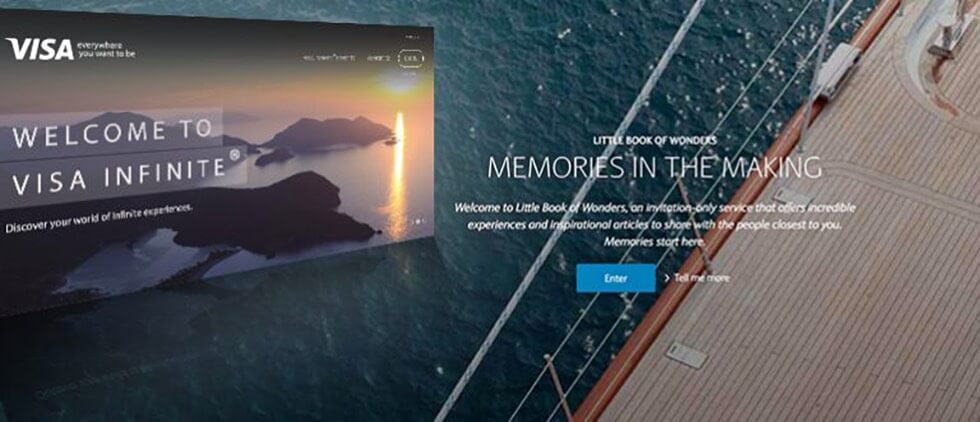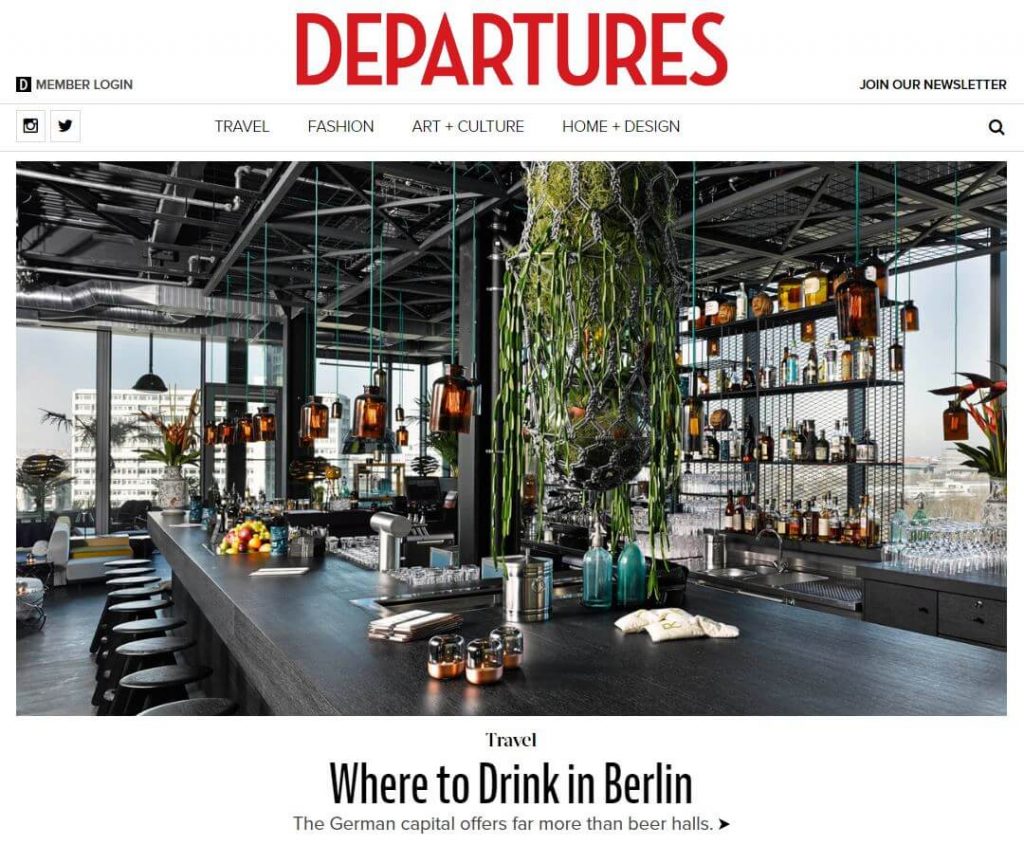Slick Mags & Petite Poems: Luxury Credit Card Content Marketing

Visa Infinite delivers luxury card marketing in just 17 syllables. Granted, the teeny tiny marketing messages are read by a large presence – Morgan Freeman – but they remain, by design, very compact. In contrast, UBS takes a much more thorough, long-form approach in support of its products, like the Visa Signature card. UBS-branded content marketing includes white papers, podcasts and interactive, multi-page PDFs. Both represent the current landscape of luxury credit card content marketing, which also still encompasses glossy travel and lifestyles magazines, like American Express’ Departures and Centurion magazines.
We’ll dive a little deeper into these campaigns, as well as efforts by Chase, Barclays, JP Morgan and Visa, but first let’s consider how content marketing works for the luxury market.
Content marketing for affluent & HNW markets
There are very good reasons brands turn to content marketing. American Banker captured some of them in “Digital Bank Marketing: It’s All About Content.” In the piece, Kevin Tynan, a bank marketer from Chicago, writes,
“Content marketing has taken center stage among companies for three reasons: it’s cheaper, more credible than paid advertising, and it gets around ad blocking technology, which has exploded in the last two years as ever more consumers embrace mobile technology. … Prospects tend to discount or even dismiss the barrage of ads coming from the financial sector, and indeed, all retailers. Content, meanwhile, embraces what the consumer wants: messages tailored to tastes and lifestyles, pertinent information that helps decision-makers.”
Messages tailored to tastes and lifestyles. Yes. And that’s the content marketing sweet spot for financial services brands attempting to reach affluent and high net worth (HNW) audiences.
So how do they do it? As Luxury Daily points out (Why and how content marketing works for luxury), some of the same rules apply across brands and audience demographics when it comes to content marketing. For example, “It [must have] value for the audience first – whether entertainment, information or other value – and the brand second.” However, from there, Luxury Daily writes, luxury brands (this includes financial institutions with products designed for their wealthiest customers) must be sure to convey luxury:
“For luxury brands, the chief value of content marketing lies in its ability to reel in, persuade and evangelize the most discerning audience in a language and elevated aesthetic that is particular to luxury. … The digital age is imbuing a whole new level of content, compelling luxury brands to expand their range of visual, written and video material, and to communicate the brand’s values and story in new ways. When done properly, the result is true connection between the brand and its consumers, and consumers’ desire for further engagement with the brand. Whether still images or dynamic video, high-quality content with superior production values has the power to intrigue luxury consumers and draw them into the brand world.”
6 examples of financial brand luxury content marketing
JP Morgan’s Summer Reading List

Each year JP Morgan publishes a summer reading list, curated from 450 nominations. The branded list – it represents “passion, power and pluck” – is in its 17th year. According to the company’s press release about this year’s list, “The annual summer list is an ever-evolving project designed to reflect the lives and times of J.P. Morgan clients and employees. It is designed to spark conversation among entrepreneur, endowment and foundation, business-owner and philanthropist clients worldwide.”
Barclay’s Little Book of Wonders

Using exclusive content in its “Little Book of Wonders,” Barclays has turned client selection of invitation-only events into an experience itself: “Little Book of Wonders is your doorway to memorable experiences and inspirational articles that have been especially selected for Barclays clients. You can choose up to five events to attend in a twelve month period, to enjoy with family and friends. You can also tailor your preferences so the events and articles you are offered first are most likely to be of interest to you.”
Amex’s Centurion and Departures magazines

American Express is known as a pro in the content marketing world. OpenForum, for example, holds up consistently as a best practice, and when it comes to luxury content marketing, its print magazine Departures is award-winning. Departures, a collaboration between Amex’s luxury publishing division and Time Inc., is “distributed as a membership benefit exclusively to American Express Platinum Card and Centurion members,” though it also has a digital component (as does fellow Amex lifestyle publication Centurion).
Chase Private Client articles

Chase publishes “expert perspectives” in the Private Client section of its website. Recently, articles included coverage of the Brexit vote, a summer economic outlook and strategies to stay invested during volatile markets. Although there is some video content, most of the articles are formatted as PDFs clients can download or print.
Deep dives from UBS

Like Chase Private Client, UBS (which markets both a Preferred Visa Signature credit card and a Visa Signature credit card) opts for long-form content marketing, and much of it – like whitepapers, podcasts and interactive microsites – is geared toward wealth management.
However, the brand also uses content, including behind-the-scenes films, to promote its involvement in contemporary art, an interest that runs deep for the company. It says, “We share a passion for contemporary art with many of our clients, and through support of innovative programs we enable our clients and art enthusiasts in general to participate in the dynamic world of contemporary art.”
Marketing haiku from Visa Infinite
https://youtu.be/k-jU6OEvH_k
In marketing its Visa Infinite card, Visa Canada curated an “Infinite List,” a “collection of experiences worth talking about.” And then it got people talking about the list with a very creative campaign: a series of short-form videos featuring Morgan Freeman reading items from the Infinite List as haiku.
In Marketing magazine, the company reported that the content marketing effort resulted in “a 60% increase in traffic to VisaInfinite.ca since the campaign began, and a 71% increase in website profile creation. There have also been 200,000 organic Google searches for ‘Infinite List,’ more than double the number of organic searches the company received for a previous campaign.” Why do they think it worked? A Visa spokeswoman told Marketing, “We wanted to speak to the heart, focusing on experiences and bringing them to life to inspire cardholders to lean into life.”
Takeaways
In this context, of course, “leaning into life,” means engaging with the card (spending) and cardmember experiences (luxury perks/rewards). Both of those are bottom-line goals for credit card companies, and in each of these content marketing examples – whether it’s promotion of wealth management or travel destinations – connects with desirable consumer behavior.
They have something else in common, as well: they’re aiming to create an experience. When Newscred wrote about luxury brands winning at content marketing, it prioritized “immersion” as a key element:
“Building an effective content marketing strategy for a luxury retail brand is not always easy. While social media encourages accessibility, luxury brands tend to thrive on maintaining a sense of exclusivity; constantly reaffirming their position as an elite, aspirational force to be reckoned with (like how Chanel follows no one on Twitter). However, nothing conjures up a fantasy like quality, immersive content.”
Otherwise, these luxury content marketing campaigns are incredibly diverse, and it’s exactly what we like to see: brands using content to differentiate themselves as a means of competing in the same space.









